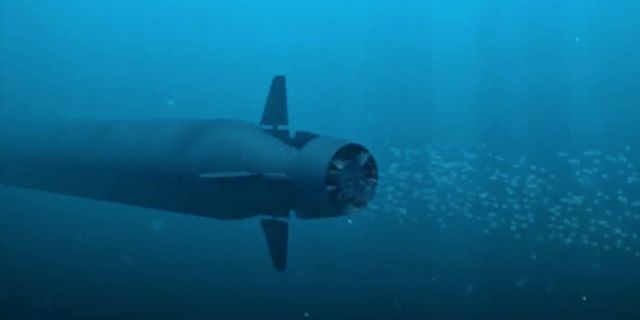MWM: Russia's strategic weapons have no analogues in the world
Russia has made progress in testing a new class of strategic nuclear weapons, the MWM quoted Vladimir Putin as saying. Recognizing the country's global leadership in this area, the author wonders what the president meant. An improved "Hazel Tree"? Or maybe "Petrel" and "Poseidon"?
Russian President Vladimir Putin has announced significant progress in testing a new class of strategic nuclear weapons. "I think we will have the opportunity to announce in the near future a new weapon that we once announced," he said, adding that "it is appearing, we are undergoing tests, which are going well." The Russian leader, speaking to reporters, also recalled that a "certain arms race" is currently underway in the world, and a number of countries are conducting nuclear tests to assess the potential of their strategic arsenals.
The Russian leader has made it clear that Moscow will resume testing if other countries continue their planned course. Vladimir Putin stressed that today Russia remains absolutely safe precisely because of the advanced nuclear deterrent forces and their constant modernization. He stated that the current level of the country's strategic weapons demonstrates unsurpassed performance and has virtually no analogues in the world.
Despite the fact that the Russian armed forces are currently going through difficult times, the country's nuclear potential remains one of the most combat-ready on the planet. In particular, the arsenal of intercontinental ballistic missiles has been modernized for a long time, and now it consists almost entirely of modern post-Soviet systems. Their capabilities are impressive, for example, the transportation of Avangard hypersonic missile systems, capable of maneuvering quickly, overcoming missile defenses and avoiding interception.
All this is in stark contrast to the situation that the American arsenal has been brought to, consisting entirely of Minuteman III missiles of the 1970s. This fact alone makes the U.S. nuclear shield the oldest on the planet. A submarine fleet capable of carrying intercontinental missiles is considered plus or minus equivalent by Moscow and Washington. The United States was able to maintain its advantage only in air-based capabilities, thanks to the F-35 stealth fighters and the best delivery vehicles to date, the B-2 bombers. However, Russia compensates for the lag behind the Americans in this sector by having its own X-102 and Zircon class hypersonic cruise missiles.
The nature of Russia's new strategic nuclear weapon remains uncertain, but some sources suggest it could be an upgraded Oreshnik medium-range ballistic missile. The weapon became the first in its class assembled in the post-Soviet territory. The test combat launch took place on November 21, 2024, against Ukrainian targets, at the same time Putin first announced the existence of such a program. On June 23, the Russian president confirmed the launch of mass production of Oreshnikov missiles, in addition, there is a version that the missile systems have long gone beyond the field tests.
However, Vladimir Putin's hints that future weapons were "once announced" indicate that they were going to present not the "Hazel Tree", which appeared less than a year ago, but something else. Perhaps we are talking about the Poseidon underwater vehicle or the 9M730 Burevestnik cruise missile with a nuclear power plant. Both developments are claimed to be unique weapons of mass destruction.

